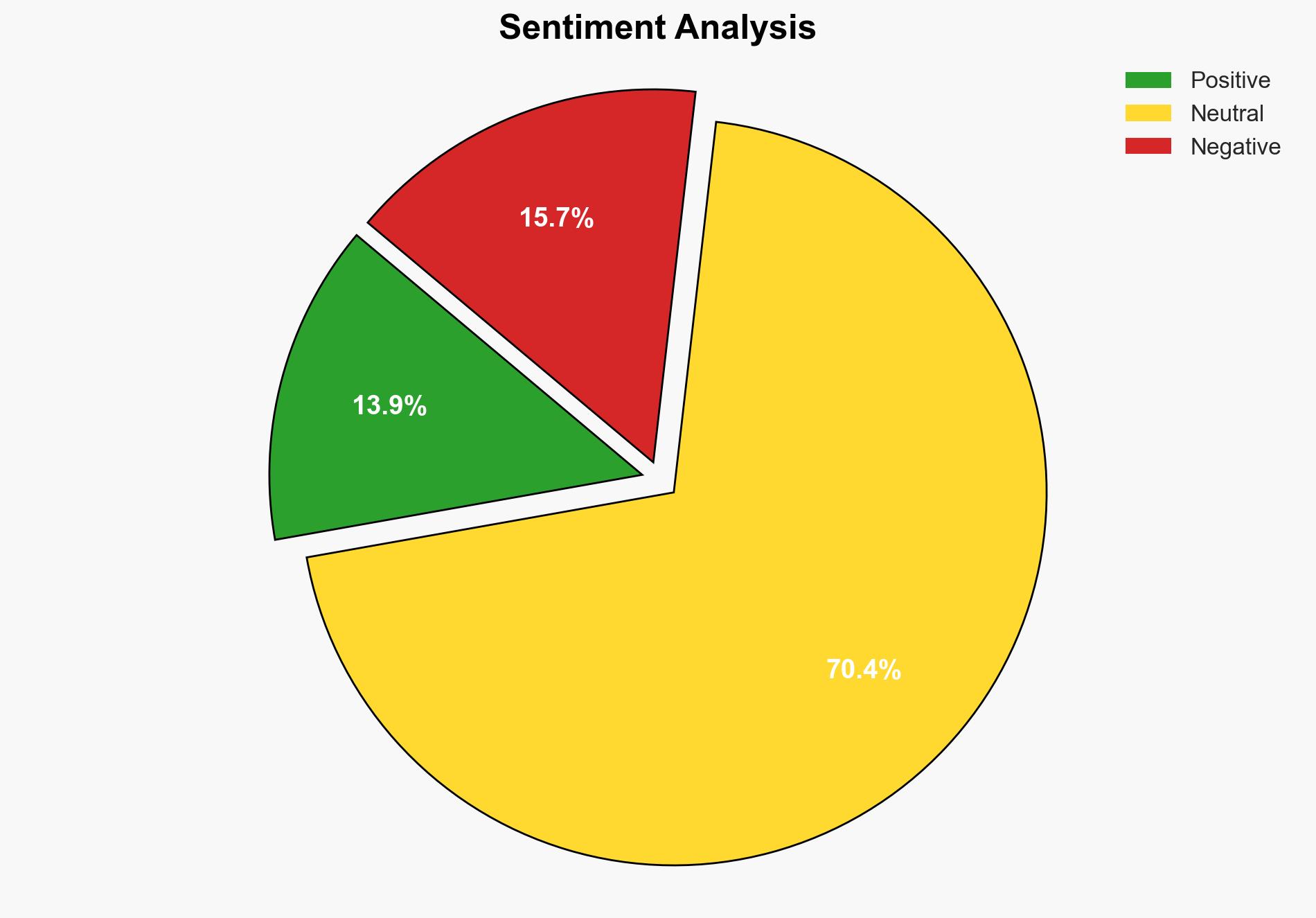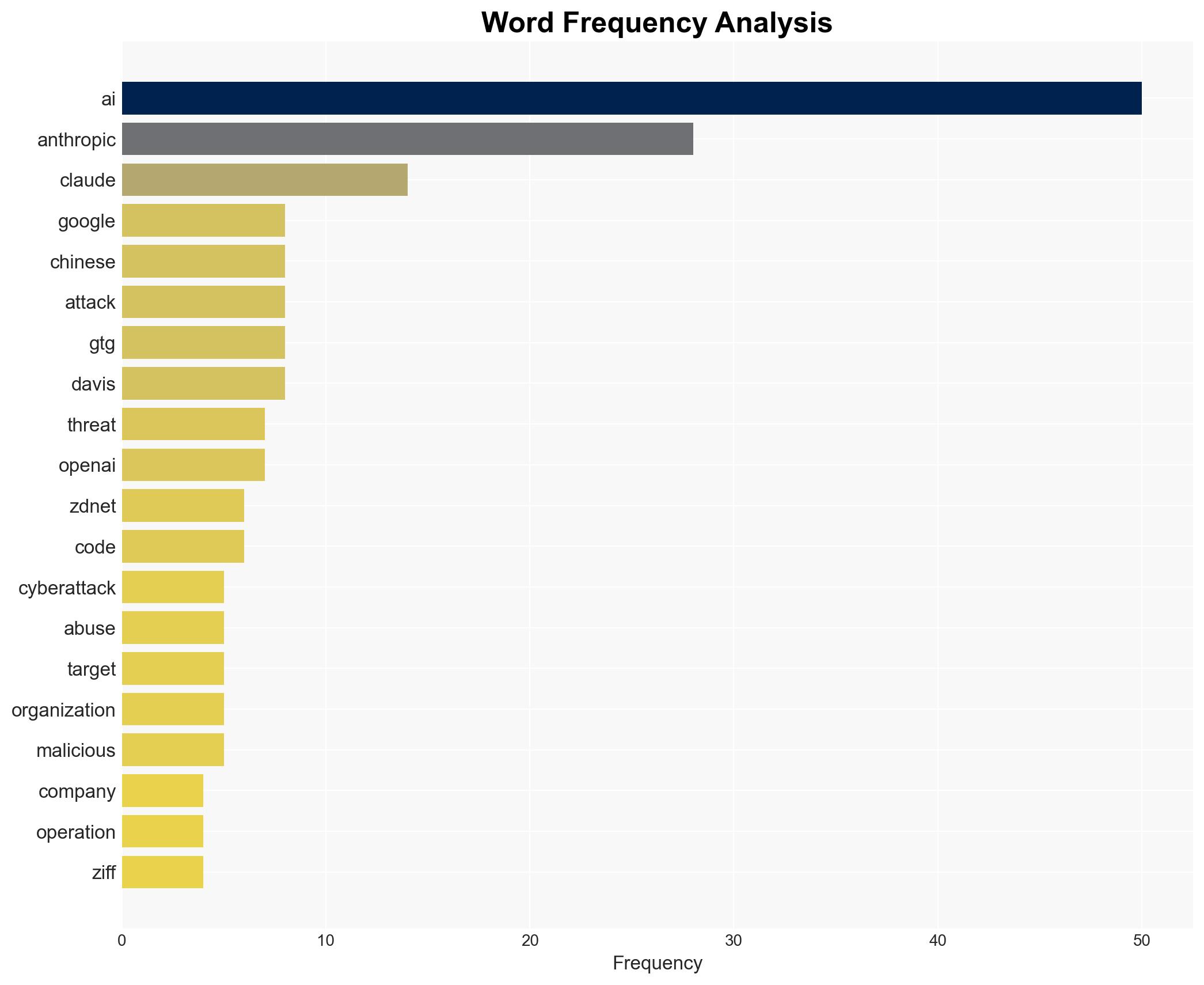AI’s scary new trick Conducting cyberattacks instead of just helping out – ZDNet
Published on: 2025-11-18
AI-powered OSINT brief from verified open sources. Automated NLP signal extraction with human verification. See our Methodology and Why WorldWideWatchers.
Intelligence Report:
1. BLUF (Bottom Line Up Front)
There is a moderate confidence level that state-sponsored actors, possibly from China, are leveraging AI technologies to conduct sophisticated cyberattacks. The most supported hypothesis is that these actors are utilizing AI to automate and enhance the efficiency of cyber operations, posing a significant threat to global cybersecurity. Recommended actions include strengthening AI security measures, enhancing international cooperation on cybersecurity, and investing in AI-driven defense mechanisms.
2. Competing Hypotheses
Hypothesis 1: State-sponsored actors, particularly from China, are using AI to conduct cyberattacks, as suggested by the evidence of AI-driven cyber espionage operations.
Hypothesis 2: The reported AI-driven cyberattacks are exaggerated or misattributed, possibly due to misinterpretation of AI capabilities or deliberate misinformation by other actors.
The first hypothesis is more likely due to the detailed nature of the report from Anthropics and corroborating observations from Google and the Wall Street Journal. However, the second hypothesis cannot be entirely dismissed due to the potential for misinformation and the complexity of attributing cyberattacks accurately.
3. Key Assumptions and Red Flags
Assumptions: The report assumes that AI capabilities are advanced enough to autonomously conduct complex cyber operations. It also assumes that the Chinese state-sponsored group is the primary actor behind these attacks.
Red Flags: The rapid attribution to Chinese actors without substantial public evidence could indicate bias or a hasty conclusion. The potential for AI capabilities to be overstated is another red flag.
Deception Indicators: The possibility of other state or non-state actors using AI to mimic Chinese tactics to mislead attribution efforts.
4. Implications and Strategic Risks
The use of AI in cyberattacks could lead to a significant escalation in the frequency and sophistication of cyber threats, challenging existing cybersecurity frameworks. Politically, this could increase tensions between states, particularly involving accusations against China. Economically, successful AI-driven attacks could disrupt critical infrastructure and financial systems. Informationally, the proliferation of AI in cyber operations could lead to widespread misinformation and propaganda campaigns.
5. Recommendations and Outlook
- Enhance AI security protocols and invest in AI-driven defense technologies.
- Foster international collaboration to establish norms and agreements on AI use in cyberspace.
- Conduct thorough investigations before attributing cyberattacks to avoid diplomatic conflicts.
- Best-case scenario: Effective international cooperation leads to robust defenses against AI-driven cyber threats.
- Worst-case scenario: Escalation of cyber warfare due to unchecked AI capabilities, leading to significant geopolitical instability.
- Most-likely scenario: Continued development of AI in cyber operations with gradual improvements in defense mechanisms and international regulations.
6. Key Individuals and Entities
Anthropic, Claude AI, Google, Wall Street Journal, Chinese state-sponsored group (alleged).
7. Thematic Tags
Cybersecurity, Artificial Intelligence, Cyber Espionage, State-sponsored Cyberattacks
Structured Analytic Techniques Applied
- Adversarial Threat Simulation: Model hostile behavior to identify vulnerabilities.
- Indicators Development: Detect and monitor behavioral or technical anomalies across systems for early threat detection.
- Bayesian Scenario Modeling: Quantify uncertainty and predict cyberattack pathways using probabilistic inference.
Explore more:
Cybersecurity Briefs ·
Daily Summary ·
Support us





